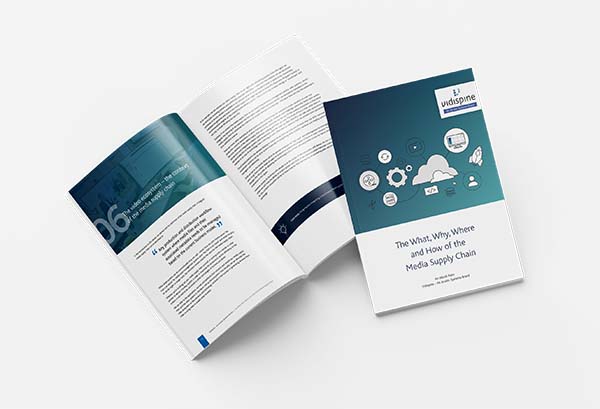
Media Supply Chain and Standardization

In a previous set of articles, we discussed the What, Where and How of the Media Supply Chain, covering the fundamentals of what the media supply chain is and how to go about building one. In this series, we’re going to go a little further and explore some important peripheral topics and issues. It’s important to acknowledge that any media supply chain is not solely a technological solution and, reflecting that, all the topics will be either non-technical with technical implications or vice-versa.
In this first part we’re going to pick up on a topic that was touched upon in the penultimate of previous articles – standardization.
In that previous article, we focused largely on the progress that has been made in the last 15-20 years around standardization and the benefits that those standards have brought to the media supply chain. However, despite this significant progress, there are still cases where strict adherence to standards results in compromise and suppresses innovation.
The “cons” of standards
Let’s take an example. We mentioned previously that MXF, the Material eXchange Format, has become the dominant file format for “professional” media. However, that is not to say that any “MXF” file can be read by any software or system that claims to have MXF support. In fact, it is misleading to refer to MXF as “a standard”, as there are actually more than 25 “standards” documents that describe MXF. Of these, seven cover the overall concepts, definitions, and data structures; approximately 10 talk about different file format/structure, and more than 12 discuss how to store different media essence types within MXF. Each of these individual published standards include a huge number of variables and, as a result, dozens of RDDs (Registered Disclosure Documents), Application Specifications and other documents exist, which describe how MXF has been implemented by various vendors, organizations, groups, and cooperatives.
The simple reason for this large number of variations is that there were, or are, so many stakeholders in the format – all wanting to have a common means to exchange media, but with differing priorities, yet none has a particular position of dominance. As such, the number of varieties is likely to continue to grow.

What does Media Supply Chain mean, why do I need one, and how do I implement one? Get answers to your questions in our free eBook.

“Close, but not close enough”
The ideal is to find a specified implementation that directly meets your requirements, however the reality is that there are many examples of “close, but not close enough”. For example, one of the dominant and most interchangeable implementations of MXF in the late 2000s was the XDCAM HD flavor defined by Sony in SMPTE RDD9. However, XDCAM HD is limited to eight channels of audio, so almost immediately, particularly in the multi-lingual markets in Asia, there was a need for an “XDCAM HD, but with 16 channels, please!”. Similarly, within months of the publication of the ARD-ZDF MXF profiles – designed for and by German broadcasters – a need arose for “the ARD-ZDF MXF profile but with subtitles”. This was something explicitly excluded from the specification.
It’s not as if these standards and specifications were rushed to market either. The MXF concept has its roots firmly in the 1990s, with the project finally kicking off in 2001, and the first MXF standard being ratified by SMPTE in 2004. Sony pushed the first version of RDD9 (mentioned above) in 2007, the AS-10 and AS-11 applications specification that were popular in the UK and parts of the US surfaced circa 2011, while the now disbanded IRT (Institut fuer Rundfunk Technik) started circulating around 2013. Further significant changes have been published throughout 2010, with the latest update to the base standard (SMPTE ST-377) in 2019. Few would describe the progress as “rapid”.
So, if you don’t quite get the interoperability promised by standards, and find yourself having to compromise on requirements, and either wait or constantly update to make sure you are compliant with the standard, might it not be better to listen to Fleetwood Mac and “go your own way”?
Well, maybe and maybe not.

Forge your own path
In many (though not all) cases, developing your own formats and methods is likely to be prohibitively costly and time consuming. If there is a large or dominant vendor with a proprietary format or method that suits your requirements, then this can be a good option. A significant and somewhat negative connotation about this though is “vendor lock in” – being stuck with that vendor with little or no option to look elsewhere when it comes to a technology refresh or, in some cases, where that vendor decides to shift its focus completely.
There are also examples where vendors have by-passed the standardization process and collaborated together to bring technology to market with a significant level of interoperability. However, there is a risk here, too, that as such technologies become defacto standards, they may develop away from your own requirements, but without the structured evaluation and review of a formal standard.
Ultimately, the decision on how much emphasis to put on published standards will depend on your organization, the requirements around interoperability, and the resources you have to either develop your own glue around proprietary solutions and/or the relationship you have with your vendors.
Looking at one area where interoperability can be extremely important, but standards limiting, in the next article we will focus on the Media Supply Chain and Metadata.
Part 1 ... Standardization
Part 2 ... Metadata
Part 3 ... Rights & Monetization
Part 4 ... Remote Working
Part 5 ... Security
Part 6 ... Corporate Responsibility
Written by




